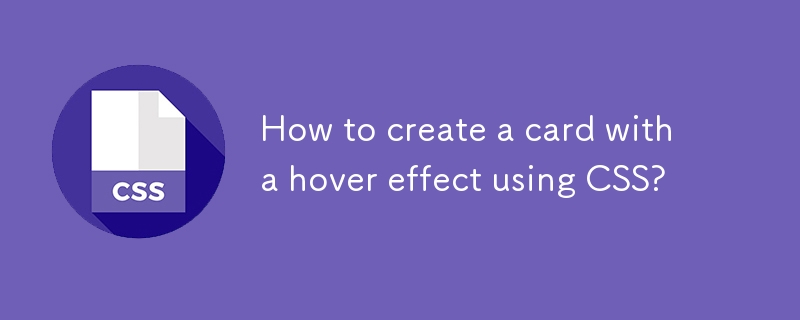
Course Introduction:To create a card with a hover effect, you must first build a basic HTML structure, including picture, title and description; 2. Use CSS to set the card style, including size, border, shadow and transition effects; 3. Use the:hover pseudo-class to realize the transformation during hover, such as shifting 5 pixels upwards and deepening shadows; 4. Optional enhancement effects include background color changes, picture zooming and fading into overlays; 5. Make sure to add transitions to the transform attributes to achieve smooth animations, and set the card to position:relative to support overlays. After complete implementation, the card will show a smooth visual feedback effect when hovering.
2025-08-02 comment 0 430

Course Introduction:This article will introduce in detail how to solve the problem of cropping or hiding images in the CSS card hover effect. By adjusting the HTML structure, placing the image outside the card and combining it with the absolute positioning image using a relative positioning container, while rationally setting the z-index and pointer-events attributes to ensure that the image remains visible and sits above other elements in any hover state, providing a smooth user experience.
2025-08-04 comment 0 495

Course Introduction:For common problems in which images are occluded or cropped during card hover effect, this tutorial will deeply analyze its root cause, namely CSS's overflow: hidden, z-index, and positioning context. By adjusting the HTML structure, using position: absolute and z-index reasonably, and combining pointer-events attributes, ensure that the image remains visible and located on the top level in any interactive state.
2025-08-04 comment 0 933

Course Introduction:This article aims to solve the problem that when the hover effect is triggered in web card design, internal images are accidentally cropped. We will dive into how overflow properties, position properties, and cascade order (z-index) in CSS interact to cause such visual anomalies. By optimizing HTML structure and CSS styles, ensure that images are displayed in full and correctly in any interactive state, and provide detailed code examples and practical suggestions.
2025-08-04 comment 0 216
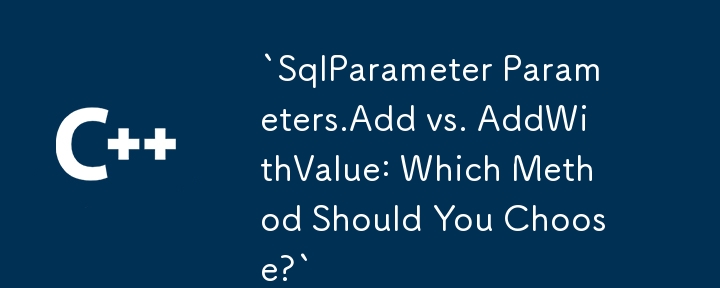
Course Introduction:SqlParameter Parameters.Add vs. AddWithValue: Choosing the Best MethodWhen working with SQL commands, you may encounter the need to add...
2025-01-10 comment 0 702

Course Elementary 13825
Course Introduction:Scala Tutorial Scala is a multi-paradigm programming language, designed to integrate various features of object-oriented programming and functional programming.
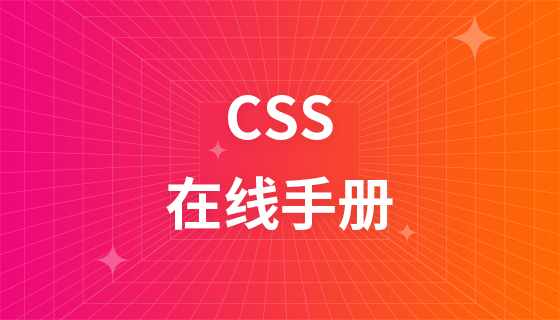
Course Elementary 82362
Course Introduction:"CSS Online Manual" is the official CSS online reference manual. This CSS online development manual contains various CSS properties, definitions, usage methods, example operations, etc. It is an indispensable online query manual for WEB programming learners and developers! CSS: Cascading Style Sheets (English full name: Cascading Style Sheets) is an application used to express HTML (Standard Universal Markup Language).
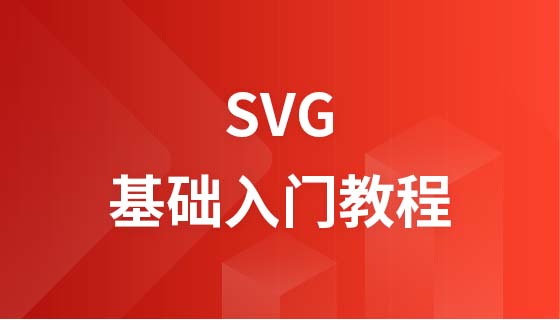
Course Elementary 13182
Course Introduction:SVG is a markup language for vector graphics in HTML5. It maintains powerful drawing capabilities and at the same time has a very high-end interface to operate graphics by directly operating Dom nodes. This "SVG Tutorial" is intended to allow students to master the SVG language and some of its corresponding APIs, combined with the knowledge of 2D drawing, so that students can render and control complex graphics on the page.
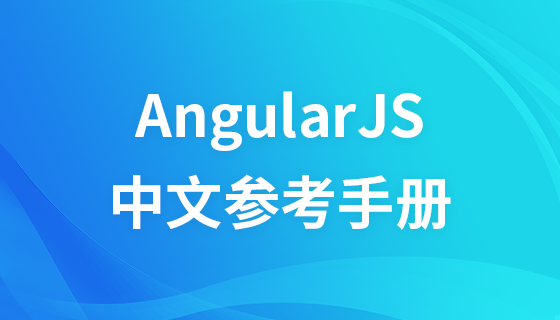
Course Elementary 24630
Course Introduction:In the "AngularJS Chinese Reference Manual", AngularJS extends HTML with new attributes and expressions. AngularJS can build a single page application (SPAs: Single Page Applications). AngularJS is very easy to learn.

Course Elementary 27488
Course Introduction:Go is a new language, a concurrent, garbage-collected, fast-compiled language. It can compile a large Go program in a few seconds on a single computer. Go provides a model for software construction that makes dependency analysis easier and avoids most C-style include files and library headers. Go is a statically typed language, and its type system has no hierarchy. Therefore users do not need to spend time defining relationships between types, which feels more lightweight than typical object-oriented languages. Go is a completely garbage-collected language and provides basic support for concurrent execution and communication. By its design, Go is intended to provide a method for constructing system software on multi-core machines.
CSS styles not applied to site
2024-04-06 17:12:23 0 1 973
Laravel Modal does not return data
2024-03-29 10:31:31 0 1 609
Can I use the automatic generation module of thinkphp5 in Windows 7 system? How to configure and use
2017-10-10 17:04:14 0 2 1409
2017-10-10 19:25:59 0 4 2965
To use mcrypt_get_key_size() in php study, how to enable mcrypt_
2017-10-10 19:47:34 0 1 1192